Just how good is high Intensity interval training compared to other types of exercise?
Name a fitness trend. Chances are you will mention HIIT training. High intensity interval training (HIIT) was ranked number one most popular in the annual survey of worldwide fitness trends in 2018 and 2019…and probably 2020 too……
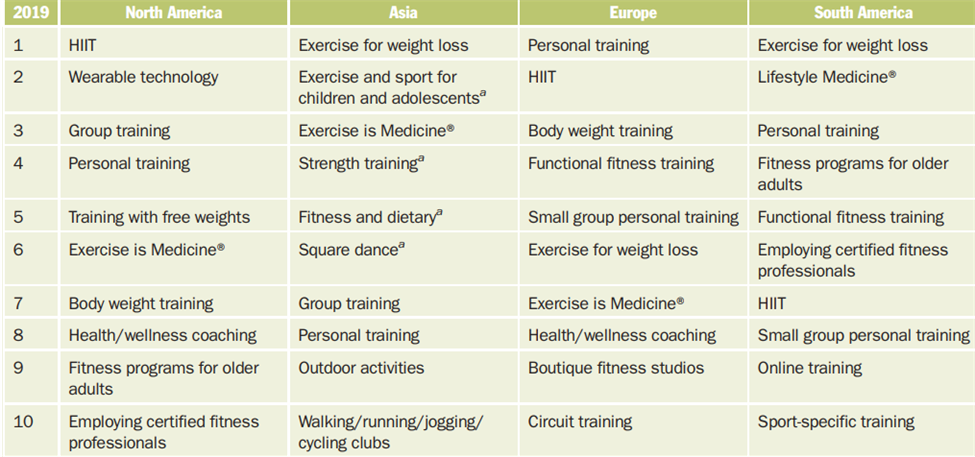
And this is no surprise because there is very good evidence that HIIT works for healthy AND unhealthy populations (vs nothing at all)…..but duh! so does any form of exercise. There is also good evidence that HIIT leads to improvements in both aerobic and anaerobic fitness [8] and improves endurance performance; probably to a greater extent than endurance training alone [9].
Case closed? No, not at all, what I am trying to find out today, is what type of intervals should you do? Should you go flat out (eg zone 7 …..above VO2max) or should you go hard at VO2max pace (zone 6)? Also how long should each interval be? And what degree of improvements are you likely to see? And finally are there additional benefits you will not get with base or threshold (sweetspot) training?
In short, if you are considering interval training, and there are many reasons you should, then what is the optimal interval prescription?
First: What are Intervals? Are where did they come from?
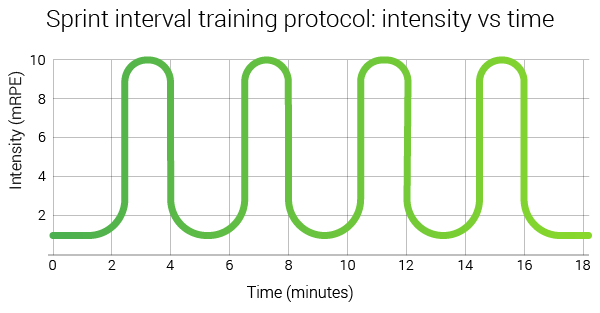
Intervals are short intense bursts of activity interspersed with rest, repeated a number of times. In terms of HR, HIIT usually reaches ≥85% max heart rate (HRmax), with recovery periods of rest or light exercise typically carried out at ≤70% HRmax. HIIT might involve longish 2–8 min of work or shorter 1–2 mins or 10–20s sprint style. And now for a bit of history…….
In 1910, Finn Paavo Nurmi and his coach Pikhala laid the foundation for interval training. He trained twice a day and his sessions were said to be so hard no one could train with him. Interval training was improved in 1930s by coach Waldemar Gerschler and physiologist Hans Reindell of Germany’s Freiburg University to develop fitness in runners. Their method consisted of running 30 to 70 seconds followed by sufficient recovery to allow the heart rate to decrease to < 120. In 1937 Gosta Holmer developed a variant Fartlek aka “speed play”. Holmer studied Nurmi’s training methods and adapted it to produce fartlek bursts of varying lengths (50m up to 3000m) and intensities in a run over natural trains and forests with recoveries varying as well. Fartlek developed great speed endurance and lead to Swedes Haag, Strand and Anderson setting numerous world records. Then in the 1940’s and 1950’s Emil Zatopek of Czechoslovakia and Hungarian coach Mihaly Igloi developed the concept of sets of short distances run quickly to permit a greater total training stimulus. Igloi’s athletes trained extremely hard, often an hour in the morning and two in the afternoon.
In 1953 Roger Bannister used intervals training of 10 consecutive quart miles with 2min rest period to break the 4min mile. At the end of the 1950s every world record from 800m to 10,000m was held by interval trained athletes. Lydiard tweaked this formula by adding base volume mixed with long intervals, fast reps, hill running and weights….basically inventing polarized training!
Main Classification of Intervals for Cyclists
Two main forms of interval training are high-intensity interval training (HIIT) and all-out sprint interval training (SIT). HIIT is performed between the second ventilatory threshold and maximal oxygen consumption (VO2max). SIT is performed above VO2max.
Types of Intervals
Sprints (SIT) eg 8 sprints per workout @ 30s on and 2min off.
VO2 HIIT eg 4 x 4min V02 max efforts with 2mins rest
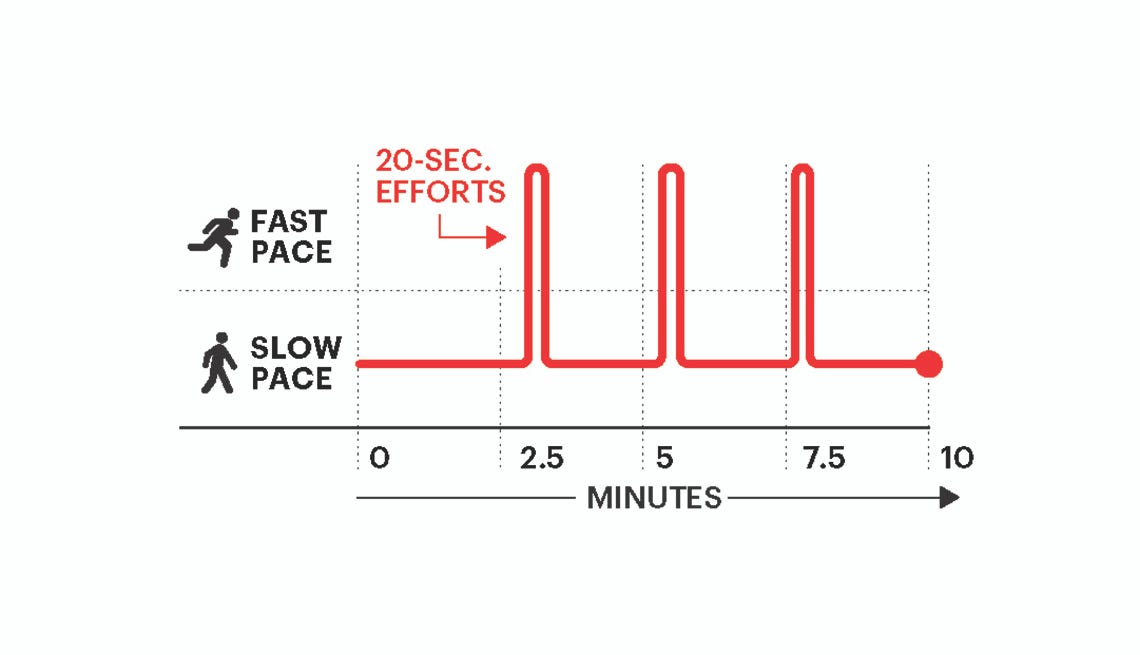

Types of Comparison
SIT vs HIIT…which is best?
SIT/HIIT vs MICT/Threshold/Sweetspot…which is best?
SIT/HIIT vs sitting on the couch…which is best?!
Time Efficiency
In general, the more intense the exercise the less time it takes to do a good workout, so it should be no surprise that intervals are very time efficient.
If a typical athlete undertakes 10 weeks of hard exercise then on average SIT would expect to undertake 400 minutes, HIIT 1000 minutes and MICT/Threshold/SweetSpot 1400 minutes and base training 5000 minutes!
Or look at it like this……if you did one hour of SIT it would be the same as
1 hour of SIT is the same as……
2.5 hours of HIIT
3.5 hours of MICT/Threshold/Sweetspot
14 hours of Base training!
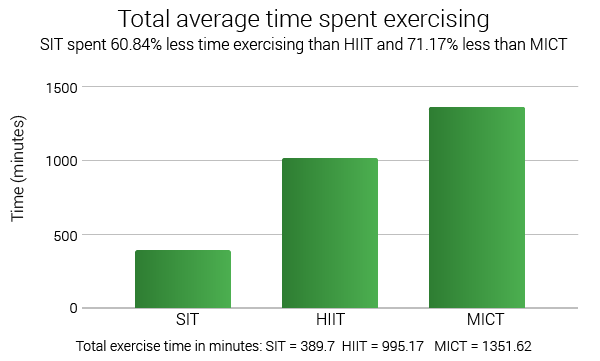

Early Evidence on Intervals for Cyclists
In 2013 Sloth (link) reviewed just 13 studies evaluating effects of SIT on VO2max showed a VO2max increases of 4.2–13.4% (g = 0.63). Milanovic et al. (ref) and Bacon et al. (ref) and Helal (link) also reviewed HIIT protocols vs longer endurance training and found a possible additional benefits of HIIT. In one review, Engel found %VO2peak increase was 7.2% in the HIIT groups, and 4.3% in the alternative training protocol over just 8 weeks (link). Here is the data from Milanovic on HIIT vs non-interval endurance training:

And Bacon (2013)……
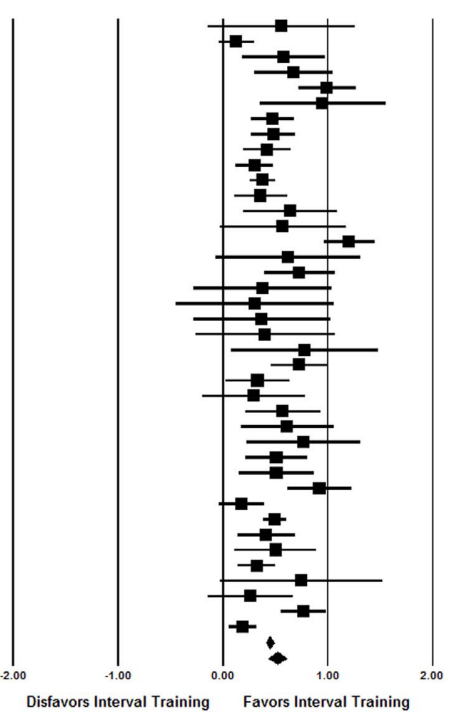
Whilst all this early evidence was good, it basically established that HIIT/SIT works when compared against nothing or endurance alone (eg base). As evidence slowly accumulated since these early studies it was not until 2019 that we finally had really convincing evidence from more than 50 studies. Indeed, in 2019 and 2020, two big reviews looked at 53 studies and 75 studies respectively.
Meta-Analysis #1 (n= 53)
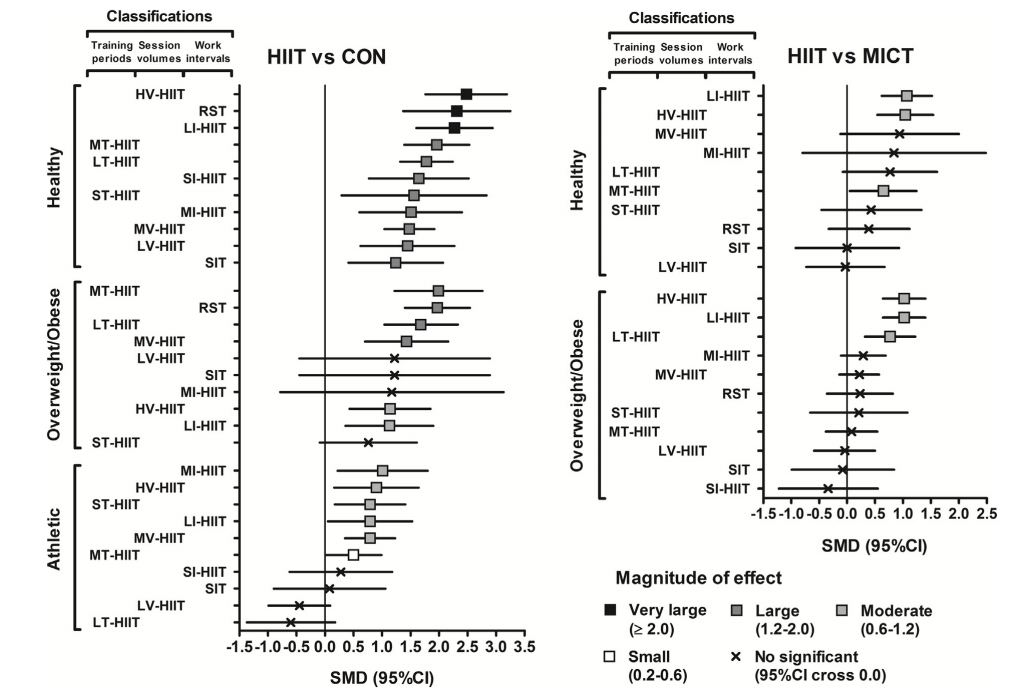
Wen et al (2019) (PDF link) examined the effects of different protocols of high-intensity interval training (HIIT) vs MICT (=sweetspot/threshold) on VO2max. 53 studies met the eligibility criteria. Overall, the degree of change in VO2max induced by HIIT varied by populations (SMD=0.41–1.81, p<0.05).
When compared to control groups ANY type of interval worked…..even short-intervals (≤30s), low-volume (≤5min) and short-term HIIT (≤4weeks) elicited clear beneficial effects on VO2max/peak.
BUT long-interval (≥2min), high-volume (≥15min) and moderate to long-term (≥4–12weeks) HIIT displayed significantly larger effects on VO2max (SMD=0.50–2.48, p<0.05).
When compared to MICT, only long-interval (≥2min), high-volume (≥15min) and moderate to long-term (≥4–12weeks) HIIT showed benefits.
Therefore to maximize the training effects on VO2max, long-interval (≥2min), high-volume (≥15min) and moderate to long-term (≥4–12weeks) HIIT are recommended…..and HIIT was definitely better than MICT (=sweetspot/threshold)
Meta-Analysis #2 (n= 75)
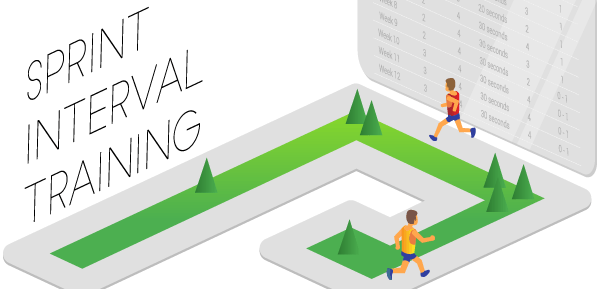
Rizzo reviewed 75 studies for the website runrepeat.com (link). He summarized the evidence from 75 studies as follows:
Sprint interval training (SIT) vs HIIT
- SIT resulted in a 39% higher reduction in body fat percentage than HIIT.
- SIT required 61 % less time spent exercising than HIIT.
- SIT conducted 10% fewer workouts per week and these workouts were 44% shorter in comparison to HIIT.
Sprint interval training vs Moderate-intensity continuous training (MICT)
- SIT resulted in a 91% higher reduction in body fat percentage than MICT.
- SIT required 71% less time spent exercising.
- SIT participants conducted 15.54% fewer workouts every week on average compared to MICT and workouts were 60% shorter!
One new 2020 Study
Thanks to a reader Gousti Fruit Ⓥ on our strava club (www.fft.tips/strava) who mentioned this new study from Rønnestad (full pdf).
Rønnestad asked athletes to do 3 weeks with three weekly sessions (ie, nine sessions ) of short intervals (three sets of 13 × 30-second intervals with 15-second recovery and 3-minutes recovery in between sets) VS long intervals (four sets of 5min intervals with 2.5-minutes recovery) on performance parameters. Total volume and intensity were closely matched.
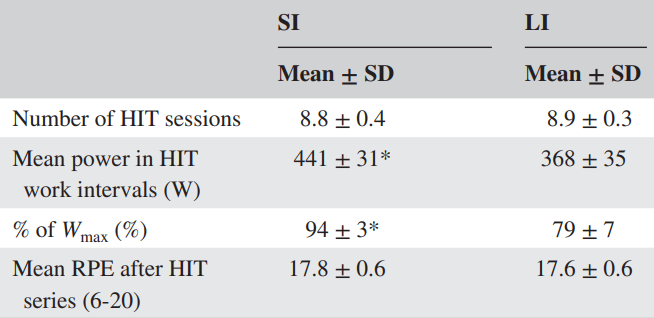

Short SIT intervals (vs long HIIT intervals) were better on the following….
- peak aerobic power output (3.7 ± 4.3% vs -0.3 ± 2.8%)
- fractional utilization of VO2max at 4 mmol L-1 [La- ] (3.0% vs -3.5%)
- larger relative increase in power output at 4 mmol/l (2.0 vs -2.8)
- power change in 20min test (4.7 vs -1.4)
- but there was no difference in change of VO2max
So overall short intense SIT is probably better than HIIT (which is still good) and both re better than threshold/sweetspot WHEN considered alone.
HIT and fat Oxidation (blog)
HIT has the potential to increase Fat Oxidation but the effect requires a sustain training period:
HIIT in special populations

SIT vs VO2 Max HIIT for Timetrials?
In 2015 Ronnestad (yes same as above)found that short intervals increased the ability to tolerate high lactate during a 40-minute cycling performance to a larger extent than longer intervals in well-trained cyclists (see link).
Laursen et al (2005) found that different HIT intervals increased the cyclists’ ability to tolerate lactate, with a correlation between increased and improved performance (link) but no difference between short and long intervals.
A very interesting new study from Rosenblat (2020) examined the effects of intervals on timetrial performance (link). A total of 6 articles showed HIIT and SIT were equally good for TTs (on time and V02 max). However, subgroup analysis based on duration of work interval indicated a 2% greater improvement in TT performance following long-HIIT (≥ 4 min) when compared to SIT. There was a moderate effect (ES = 0.70) in favor of HIIT over SIT in maximal aerobic power (MAP) or maximal aerobic velocity (MAV).
>> so HIIT may be as good for TTs or even slightly better!
HIIT for poor health
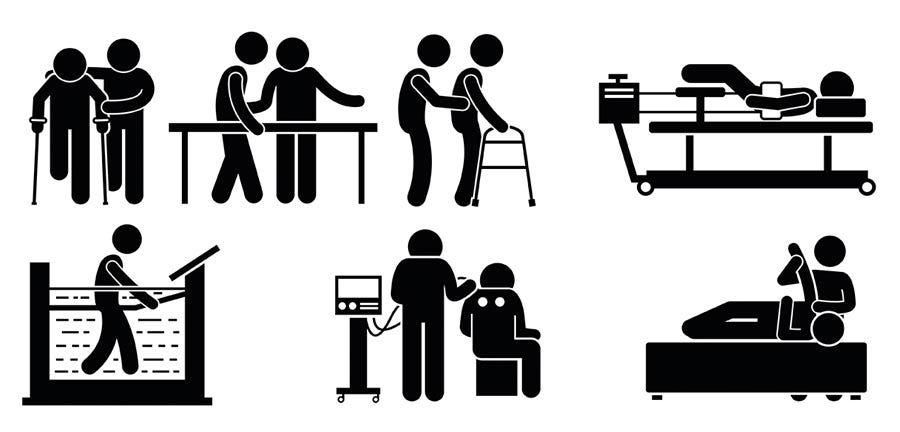
Martland and Stubbs looked at all the evidence for HIIT in unwell populations (link). They found 33 systematic reviews and 25 meta-analyses. HIIT improved cardiorespiratory fitness, anthropometric measures, blood glucose and glycaemic control, arterial compliance and vascular function, cardiac function, heart rate, some inflammatory markers, exercise capacity and muscle mass, versus non-active controls. Compared to active controls, HIIT improved cardiorespiratory fitness, some inflammatory markers and muscle structure. Improvements in anxiety and depression were seen compared to pre-training. Key benefits for health (as opposed to fitness) are said to be:
- Boost your youth hormones. A study of 22 sedentary men in their 60s found that regular exercise plus HIIT sprints on a bike increased their testosterone by 17 percent in 12 weeks.
- Recharge your cells. Researchers at the Mayo Clinic found that people ages 65 to 80 who incorporated HIIT into their walking or biking programs made more proteins for their energy-producing mitochondria, effectively slowing down aging at a cellular level.
- Lose your belly. Another study of sedentary women compared 20 minutes of HIIT with 40 minutes of steady-state exercise. The HIIT subjects were the only ones who lost fat — primarily belly fat.
- Protect your heart. In a study of nearly 5,000 people with heart disease, researchers found that HIIT did more to protect the subjects from future heart problems than traditional moderate workouts.
- Keep active longer. A Japanese study put 696 people of middle age or older on a walking program that incorporated HIIT training. Seventy percent were still doing the workout 22 months later.
Length of HIIT (V02 max)?

No one has looked in detail at SIT intervals but a few groups have looked at VO2 max intervals. In an early 1998 study Stepto investigated the effects of five different HIT programmes, performed twice per week for 3 consecutive weeks, on the rate of performance improvements in twenty endurance-trained cyclists. Benefits were best in those doing 8 × 4 minutes (at 85% Ppeak, 90s recovery) and also from 12 × 30 seconds at 175% Ppeak (4.5 minutes recovery). This led to Seiler re-examining interval duration. Seiler and colleagues compared the effects of three different formats of long intervals on 35 cyclists for 7 weeks. He looked at 4x4m or 4x8m or 4x16m sessions with 2mins rest in between. (free PDF link)
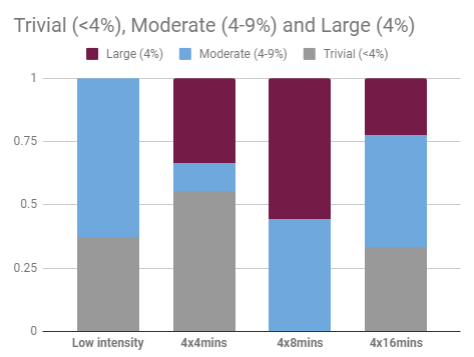
Power at 4 mmol/L lactate (approximate lactate threshold) improved from 241W to 280W in the 4×8 group. By comparison, the 4×16, 4×4 and low-intensity groups displayed increases in threshold power of 9%, 8% and 8% respectively. VO2 max improved with 10.4%, 6.5%, 5.6% and 3.4% in the 4×8, 4×16, 4×4 and low-intensity group, respectively. This is a summary chart of how much they improved…62% of low intensity had only “trivial gains” but 55% of 4x8mins group had large gains! (full chart shown below)……
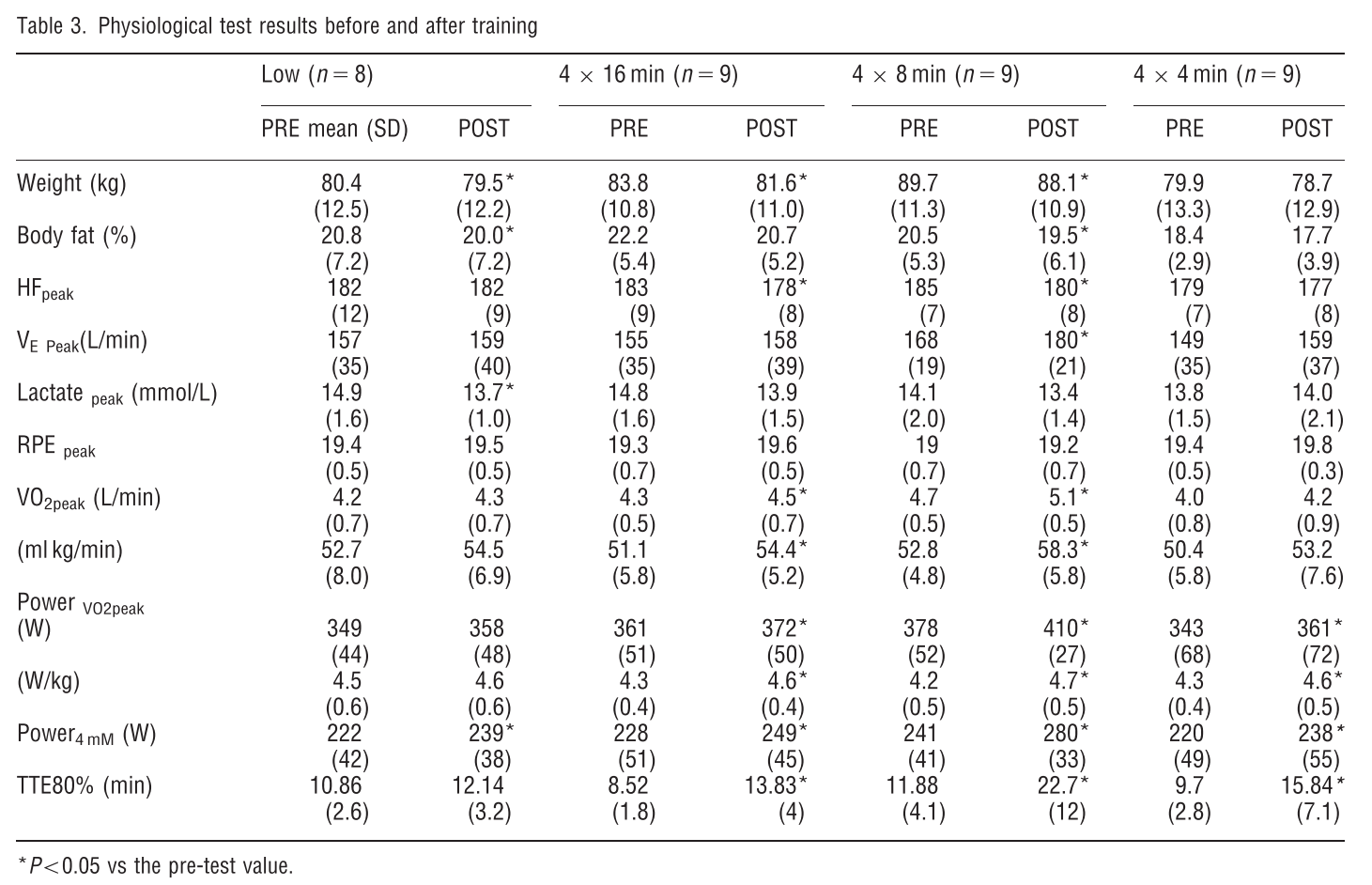
So in this ONE relatively small study 4x8min intervals were the best type of V02 max HIIT intervals
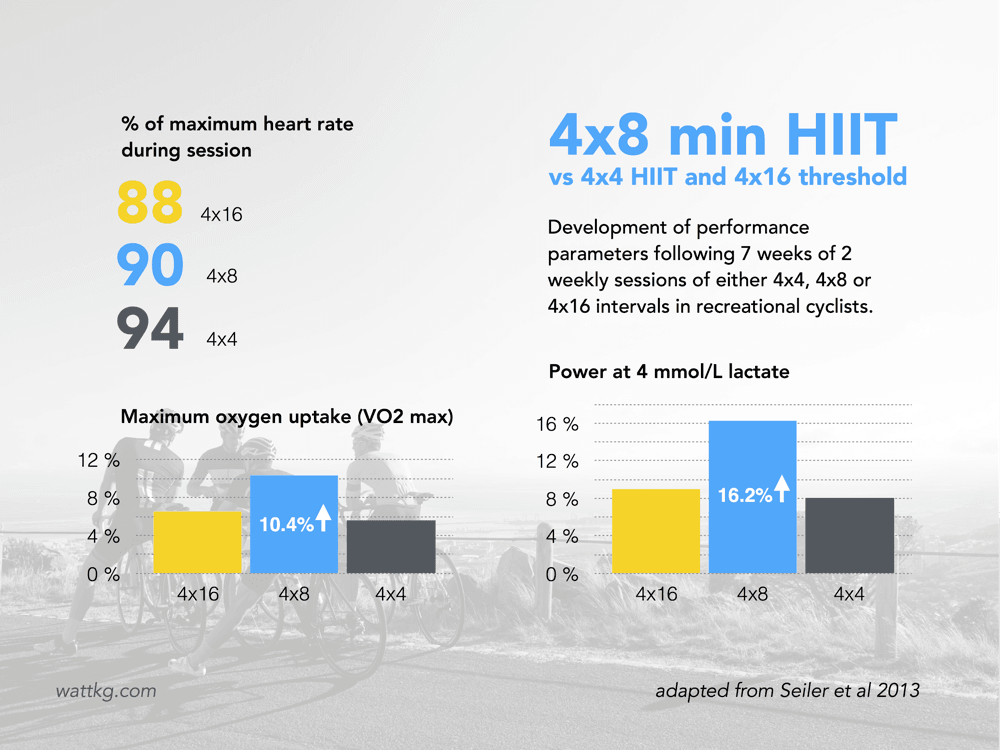
Rest & Recovery Intensity and Duration
There is no hard and fast rule but in general shorter SIT have recovery rates that are also short (eg 1min sprint, 1min rest) and longer HIIT sessions have longer recovery.
Kemi did a study of 4×4-minute HIIT protocols varying active recovery to 60–100% of lactate (La-) threshold (LT). Basically they found the highest exercise stress during 4×4-minute HIIT was with an exercise intensity of 95% of VO2max, and active recovery should be set to 60–70% of LT during HIIT and 80–90% of LT after HIIT to most efficiently prevent excess La- and aid recovery. see http://eprints.gla.ac.uk/183667/
HIIT in a training plan
No one is suggesting of doing just HIIT and only HIIT. That would be suicide. Suicide by intervals (I am looking at you Jonathon Levie! 500w x99 times!!!!).
Stöggl & Sperlich 2015
Stoggl examined the effect of integrating HIIT into a training plan with three options…..
- 14 HIIT sessions in 4 weeks “classic HIIT”
- 3 HIIT sessions in a POLARIZED TID each 4 weeks “classic POL”
- 2 threshold/sweetspot sessions every 3 weeks “classic THR”

The training intensity distributions with respect to LIT, MIT, and HIIT were 68/6/26% for POL, 43/0/57% for HIIT and 64/35/1% for CG/HVLIT.
The results were clear that over the course of training, polarized was best, HIIT was a close second. Threshold(sweetspot) and base (HVT) were by far the worst choices as shown here:

Actually, only the HIIT group achieved improvements in peak power/velocity (+6.4%, P < 0.001) and peak lactate (P = 0.001). Acute HRR was improved in HIIT (11.2%, P = 0.002) and POL (7.9%, P = 0.023). The only thing that improved in all groups was time-to-exhaustion. The full paper is here.
The conclusion from this is that POL and HIIT training plans are optimal for er….shall we say 99% (*cough*) and mostly base and mostly threshold/sweetspot and probably best for 1%. Actually I am joking, nothing is ever as clear as 99:1 no legitimate coach or organization would claim that would they??
Siler and ØYSTEIN, 2017
In 2017 Seiler and revisited his 2013 study looking at HIIT over 4m,8m and 16mins but this time experimented with the order of the intervals: increasing (INC), decreasing (DEC), and mixed (MIX) HIIT groups (link).
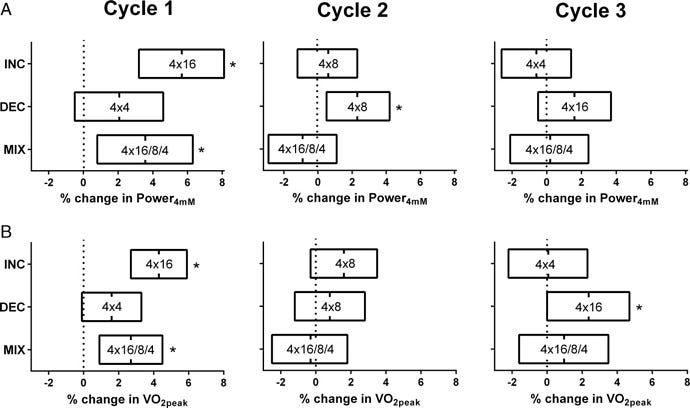
The mean (95% CI) improvement before and after the mean power during a 40-min all-out trial (Power40min) was 8.0%, 7.4%, and 4.9% in INC, DEC, and MIX groups, respectively. Peak power was increased significantly by 7.1% 6.0%, and 6.5% in INC, DEC, and MIX groups, respectively. MIX and the DEC groups improved significantly in mean Power30s by 2.4% and 2.7% but only 1.2% occurred in the INC group.
Overall, averaging it all out decreasing (DEC) was probably best but only just!
Biological Mechanisms of Intervals
I look at the mechanisms of HIIT in another blog here: https://www.cyclingapps.net/blog/what-is-the-secret-underlying-the-benefits-of-hiit/
Cautions about HIIT
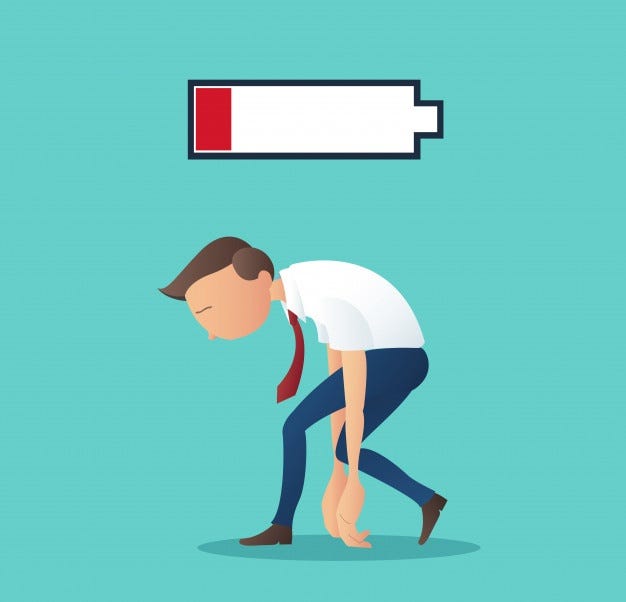
So, I have made the case for HIIT…in that case why doesn’t everyone just do mostly HIIT most of the time. The main cautions are the risks of over-reaching, overtraining, burnout and injury. Risk is higher with high training loads and higher intensity, actually intensity > duration. Guidelines suggest to moderate this risk by training HIIT no more than 2 times a week in beginners/improvers and 4 times per week in advanced users. Further they suggest no more than a weekly increase of 10% in training time, 15% number of repetitions, or 20% total distance. Alternatively take a birds-eye-view and keep your TSB between +5 and -25 on a weekly basis.
Conclusions
Intervals work better than nothing in health and disease
Intervals work better than other common training TIDs
Combined training with HIIT (eg POL) is the optimal training plan for 99%
SIT may be slightly superior to VO2max HIIT for most athletes
VO2max HIIT may be slightly superior to SIT for time-trialists
Starting with shorter intervals and increasing may be best rotation
Significant improvements can be measured within 2–4 weeks of interval training ( Med Sci Sports Exerc 1996; 28: 1427–34).
Finally when typing SIT and HIIT careful where you type the “h”.
Post Script…..High Volume vs Low Volume HIIT
Just when I thought I had it all wrapped up, I read this study….Williams and colleagues attempted to answer whether to do high, medium or low intensity intervals (link). 677 participants across 18 aerobic exercise training interventions from eight different universities in five countries were included in the analysis. Participants had completed 3 weeks or more of either high-volume HIIT (n = 299), low-volume HIIT/SIT (n = 116), or MICT (n = 262) and were predominately men (n = 495) with a mix of healthy, elderly and clinical populations. Each training intervention improved mean VO2peak at the group level (P < 0.001). After adjusting for covariates, high-volume HIIT had a significantly greater (P < 0.05) absolute VO2peak increase (0.29 L/min) compared to MICT (0.20 L/min) and low-volume HIIT/SIT (0.18 L/min). Adjusted relative VO2peak increase was also significantly greater (P < 0.01) in high-volume HIIT (3.3 ml/kg/min) than MICT (2.4 ml/kg/min) and insignificantly greater (P = 0.09) than low-volume HIIT/SIT (2.5 mL/kg/min). Based on a high threshold for a likely response (technical error of measurement plus the minimal clinically important difference), high-volume HIIT had significantly more (P < 0.01) likely responders (31%) compared to low-volume HIIT/SIT (16%) and MICT (21%). Covariates such as age, sex, the individual study, population group, sessions per week, study duration and the average between pre and post VO2peak explained only 17.3% of the variance in VO2peak trainability.
In conclusion, high-volume HIIT had more likely responders to improvements in VO2peak compared to low-volume HIIT/SIT and MICT.



